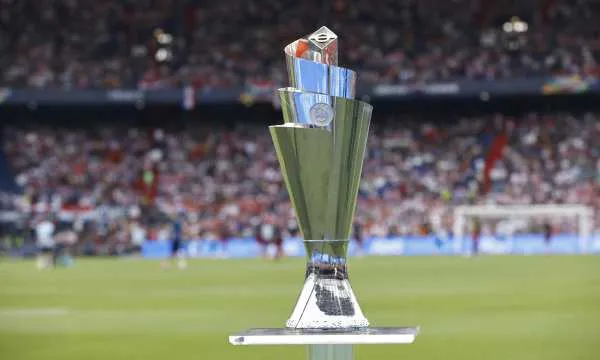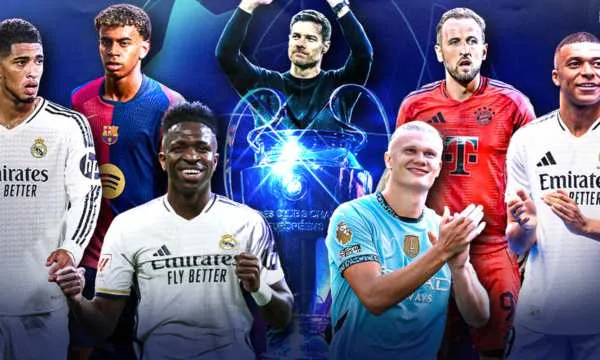The UEFA Nations League turns FIFA dates into drama, featuring intense matchups, a renewed format, and truly tangible sporting consequences.
Anúncios
Organized into Leagues A, B, C, and D, the competition balances rivals by ranking, replacing forgettable friendlies with meaningful duels.
With compact groups and home and away matches, promotion, relegation, and titles are at stake, creating an ongoing, thrilling narrative.
In the current cycle, the League A quarter-finals bring elite clashes and decisions that impact the entire calendar.
Following the trends now positions you to seize decisive moments, understanding formats, strategies, and effects for both national teams and European fans.
What is the Nations League and How the Tournament Works
The UEFA Nations League is a biennial competition that groups European national teams into leagues based on ranking.
Its goal is to create meaningful matches throughout the calendar while reducing low stakes friendlies.
In practice teams are placed into Leagues A to D and then divided into balanced groups that deliver more competitive fixtures.
In the 2024 to 2025 cycle UEFA introduced a quarter final stage for League A which brought a new layer of drama.
The top two teams from each League A group advanced to quarter finals before the semi finals and the showpiece final.
This structure keeps more elite nations in contention for longer which increases excitement and fairness across the field.
Promotion and relegation continue to shape the stakes across all leagues. Teams that finish high rise to stronger tiers while those at the bottom drop to lower levels.
Every match carries consequences which is exactly why supporters and players have embraced this format with growing enthusiasm.

The Strongest and Favorite Teams in 2025
Portugal enter 2025 as the title holders after defeating Spain in the final of the 2024 to 2025 edition in Munich.
The match ended level at two to two before Portugal prevailed in a penalty shootout to claim their second Nations League crown.
That triumph made Portugal the first team to lift the trophy twice which signals a standard of consistency at the highest level.
Spain remain among the top contenders thanks to their tactical discipline and deep talent pool.
As the winners of the 2022 to 2023 edition they showed resilience on their path back to the final but fell in the shootout.
Their blend of possession control and versatile forwards keeps them firmly in any conversation about favorites.
Germany showed strength as hosts by reaching the semi finals and delivering authoritative displays during the league phase.
Their confident seven to zero win over Bosnia and Herzegovina underlined their attacking potential and press intensity.
With a balanced squad and home momentum recently behind them Germany project a credible claim as a favorite.
Discover Teams that Have Already Made History in the Nations League
Portugal were the inaugural champions in 2019 and have now added the 2024 to 2025 title to their honors.
This dual success places them alone as the first nation with two Nations League trophies.
Winning twice in a short span reflects sustained quality and a clear competitive identity that travels well in tournament football.
Spain’s victory in 2022 to 2023 ended a long wait for a major international trophy and rejuvenated belief in their evolving generation.
Their ability to return to the final at the Allianz Arena underscored their stability at the elite level. Consistent deep runs are often a stronger measure of progress than a single isolated triumph.
France captured the 2020 to 2021 title and finished third in the 2024 to 2025 edition which underscores reliable performance across cycles.
With a deep bench and experience in knockout football they remain poised to threaten in any bracket. For neutrals this kind of consistent excellence is part of what makes the Nations League compelling to follow.
Individual Highlights: Stars Who Can Decide Matches
In tightly contested matches, individual brilliance often decides the outcome.
Gyökeres led the scoring charts from 2024 to 2025, showcasing constant movement and clinical finishing.
His runs between defenders, second phase attacks, and calm composure turn half chances into tangible advantages for Sweden.
Portugal maintains its structure with Bernardo Silva and Bruno Fernandes linking the lines, while Cristiano constantly threatens with his presence and precise finishing.
Spain accelerates between the lines, with Rodri setting the tempo, Lamine Yamal stretching the width, and Morata finishing with sharp, opportunistic precision.
Balanced goalkeepers redefine margins with quick reflexes, aerial dominance, and clean distributions, turning dangerous crosses into controlled counterattacks consistently.
Dominant defenders win duels, protect the box, and break lines with vertical passes, reigniting attacks before the opposition reorganizes defensively.
On big nights, the sum of these details builds an invisible advantage, deciding semifinals and finals with calm, repetition, and flawless execution.

What Makes the Nations League So Competitive?
First the format ensures strong teams face strong teams more frequently which reduces predictable scorelines.
The addition of quarter finals in League A raised the number of high stakes games and kept more contenders alive deeper into the calendar.
This dynamic rewards consistent performance rather than one off bursts of form.
Second the financial structure has grown in relevance as the competition matured.
UEFA reported combined revenue for the Nations League alongside qualifiers and selected matches in the hundreds of millions of euros with broadcasting representing the largest share.
These resources reinforce development programs and infrastructure while elevating the professional standards around the national team environment.
Third broader interest is visible in attendance and engagement metrics. The final at the Allianz Arena drew 65,852 spectators which reflects the event’s rising status within the football calendar.
That energy translates into vibrant atmospheres that test composure and push teams to their limits across every minute.
Conclusion
The latest chapter of the Nations League delivered a gripping story led by Portugal’s second title and Spain’s unwavering pursuit.
Germany’s surge as hosts and France’s steady excellence added depth to the narrative.
With emerging scorers like Viktor Gyökeres and a format designed for competitive balance the stage is set for more memorable nights ahead.
As the tournament evolves the incentives and structure continue to refine performance across the continent.
Fans benefit from frequent heavyweight clashes while rising teams gain pathways to test themselves against elite opposition.
If you follow the core trends now you will be perfectly placed to enjoy the next decisive moments.
FAQs
1. Which team stood out with an unprecedented achievement in Nations League history, and what was the feat?
Portugal, becoming the first nation to win the trophy twice, with titles in 2019 and 2024-2025.
2. What was the main change in League A format for the 2024-2025 cycle, and how did it impact the competition?
The introduction of a quarterfinal stage, increasing the number of high-stakes matches and keeping more elite nations in contention for longer.
3. Beyond the favorite teams, which player from a lesser-known nation stood out individually in the 2024-2025 edition?
Swedish forward Viktor Gyökeres, who was the competition’s top scorer with nine goals.
4. Besides the sporting format with promotion and relegation, which other two factors contribute to the high competitiveness of the Nations League?
A robust financial structure with high broadcast revenues and growing public interest, reflected in increasing stadium attendance.
5. Which teams contested the final of the 2024-2025 edition, and how was the champion decided?
Portugal and Spain contested the final. After a 2-2 draw in regular time, Portugal won in a penalty shootout.


